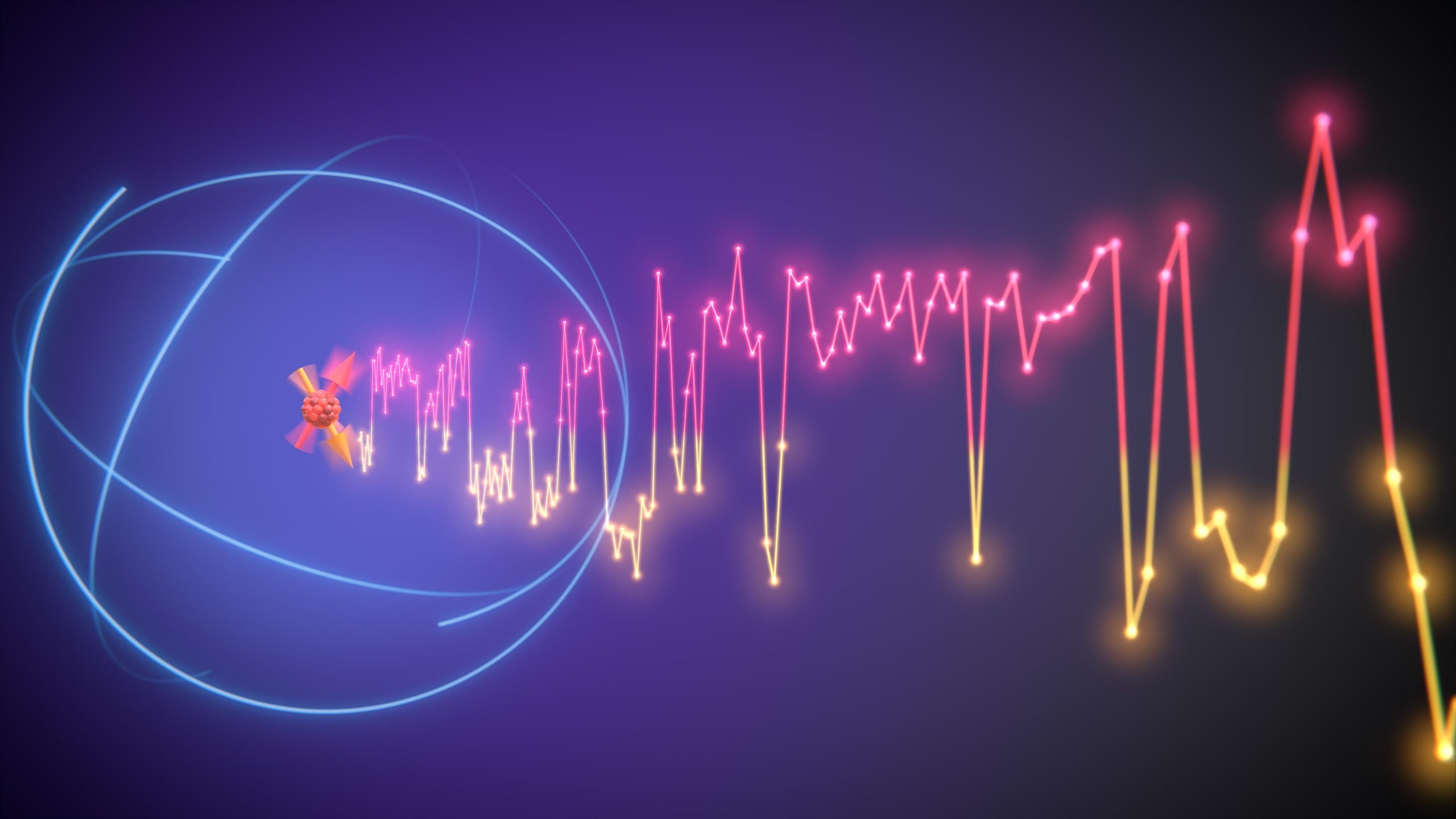Researchers at Delft University of Technology in the Netherlands have observed the magnetic nucleus of an atom flipping between states in real time.
Researchers at Delft University of Technology in the Netherlands have succeeded in observing the magnetic nucleus of a single atom switching between states in real time. They measured the nuclear “spin” by detecting its influence on the electrons of the same atom using the needle of a scanning tunneling microscope. Unexpectedly, the spin remained stable for several seconds, opening new possibilities for precise control of nuclear magnetism. The study, published in Nature Communications, represents progress toward quantum sensing at the atomic level.
A scanning tunneling microscope (STM) is equipped with an atomically sharp needle capable of detecting individual atoms on a surface and creating images with atomic-scale detail. More specifically, STM senses the electrons that surround an atomic nucleus. Both the electrons and the nucleus act as tiny magnets, each carrying a property known as “spin,” the quantum equivalent of magnetic orientation.
About ten years ago, scientists first succeeded in tracking the spin of a single electron with an STM. Building on this, the Delft team led by Professor Sander Otte asked whether the same method could be used to observe nuclear spin over time, thereby probing the second magnetic component of the atom.
Reading out the nuclear spin
The STM is not sensitive to nuclear spins directly, so the team had to use the electron to read out the nuclear spin indirectly. “The general idea had been demonstrated a few years ago, making use of the so-called hyperfine interaction between electron and nuclear spins,” Otte explains. However, these early measurements were too slow to capture the motion of the nuclear spin over time.”
Rapid measurements
First authors Evert Stolte and Jinwon Lee set out to perform rapid measurements on an atom known to carry a nuclear spin. To their excitement, they observed the signal switching between two distinct levels in real time, live on their computer screen.
“We were able to show that this switching corresponds to the nuclear spin flipping from one quantum state to another, and back again,” Stolte says. They determined that it takes about five seconds before the spin changes, much longer than many other quantum systems available for the STM. For instance, the lifetime of the electron spin in the same atom is only around 100 nanoseconds.
Single-shot readout
Since the researchers could measure nuclear spin state faster than it flips and (mostly) without causing a flip by the measurement itself, they achieved so-called ‘single-shot readout’. This opens up exciting experimental possibilities for controlling the nuclear spin.
Furthermore, fundamental progress in the readout and control of an on-surface nuclear spins could, in the long term, assist in applications like quantum simulation or quantum sensing at the atomic scale. Stolte: “The first step in any new experimental frontier is being able to measure it, and that is what we were able to do for nuclear spins at the atomic scale.”
Reference: “Single-shot readout of the nuclear spin of an on-surface atom” by Evert W. Stolte, Jinwon Lee, Hester G. Vennema, Rik Broekhoven, Esther Teng, Allard J. Katan, Lukas M. Veldman, Philip Willke and Sander Otte, 21 August 2025, Nature Communications.
DOI: 10.1038/s41467-025-63232-5
Never miss a breakthrough: Join the SciTechDaily newsletter.
Source link
